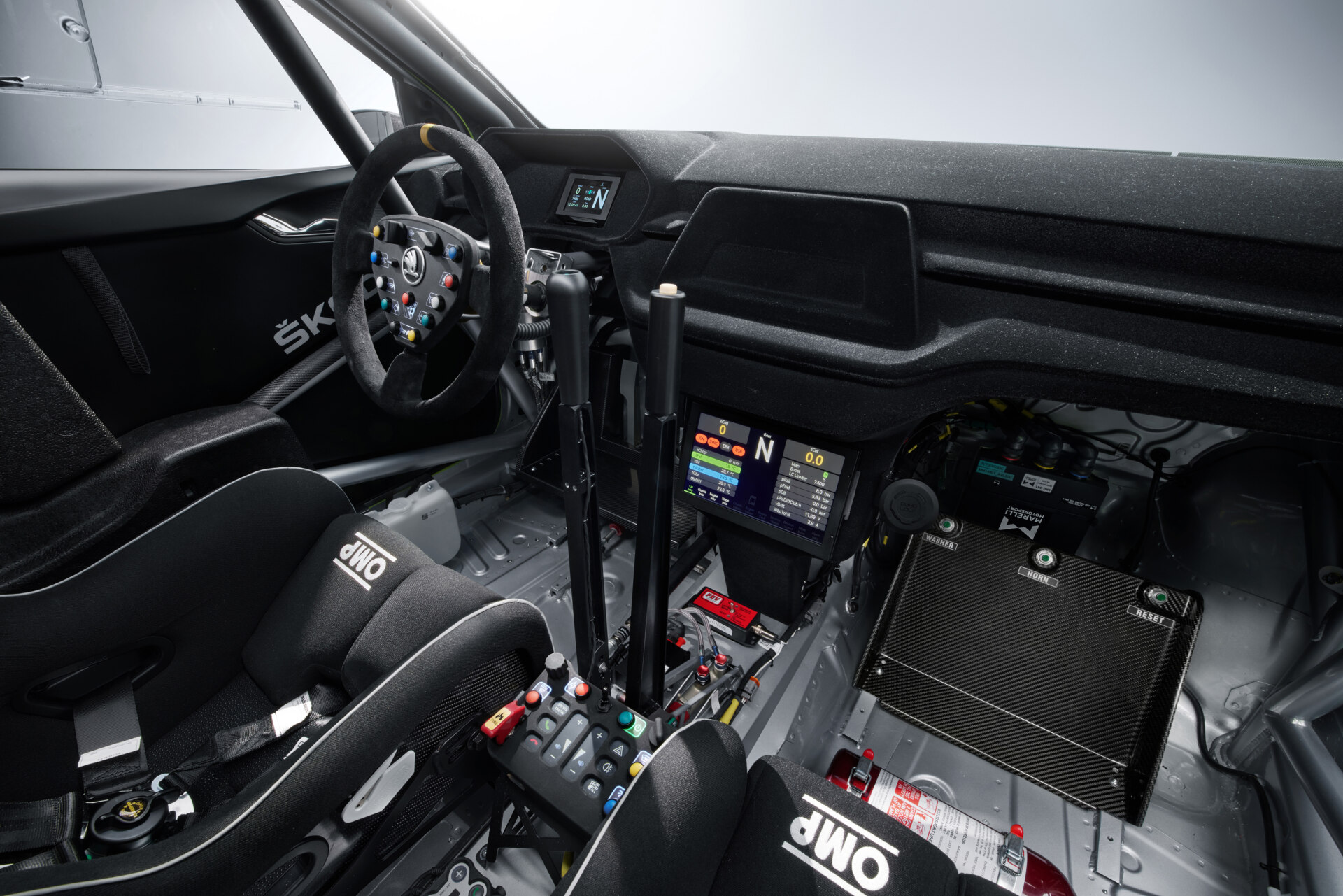In order for a car to participate in competitions under the auspices of the International Automobile Federation (FIA), the car must be approved by this organisation that oversees motorsport, in a process known as homologation. The homologation essentially confirms that the car complies with the rules that apply to it. The Škoda Fabia RS Rally2 was homologated in 2022 and, despite Škoda Motorsport's experience, it was a challenging process.
Different rules apply for the competition cars depending on the category. For example, in the highest category of rally specials, the Rally1 class, engine power can reach up to 500 hp (368 kW) thanks to a 36mm diameter intake restrictor and hybrid drive. In the Rally2 class, the class for which Škoda Motorsport also traditionally prepares specials, a 32 mm diameter intake restrictor is permitted, which means a power output of around 290 hp (214 kW). In this case, the engineers have many more limits to adhere to and boundaries not to exceed.
"The basis for the Rally2 special category must be a car from the regular production model range, and the car manufacturer must produce more than 25,000 of them within twelve months," explains Michaela Bubeníková, homologation specialist at Škoda Motorsport. That's why competition specials tend to be based on truly ordinary production cars, such as the Škoda Fabia, rather than exceptional sport models. The rules also dictate minimum dimensions, which manufacturers typically want to get close to in order to make the car as light and balanced as possible.
And it is the production Fabia that comes closest to these limits, so it was the ideal basis for the new Rally2 special. "Engineers then have limited options for modifying the production car," says Michaela Bubeníková. The engine, for example, also has to be based on a production unit, although not directly on the model's engine. The power unit of the Fabia RS Rally2 special thus has its origins in the EA888 engine family from the production Škoda Octavia and Kodiaq models. The advantage for the racing special was also the high rigidity of the body of the new generation of the small hatchback from Mladá Boleslav.
Long distance running
The homologation itself is fast, but the whole process is a bit longer. "We consult with the FIA delegates directly about six months to a year before the scheduled homologation," explains Michaela Bubeníková. The reason for this is that the rules can, of course, be interpreted in different ways and only the FIA representatives can confirm that the interpretation chosen by the Škoda Motorsport engineers is correct. At that time, the car's base is already complete and there is time for fine-tuning of various parts.
The homologation itself takes place at the FIA Logistics and Technology Centre in Valleiro, France, and it is a process lasting over three days. It's essentially a non-stop job, with FIA technicians accompanied by no more than ten team technicians checking that the car complies with the documentation provided and the requirements of the rules. The documentation from the carmaker runs to hundreds of pages, with the homologation form alone running to 230 pages.
"Although the final homologation is more or less last formal check that everything complies with the rules and documents, it is a demanding process where we work in shifts. Two mechanics, for example, must always be ready to disassemble and demonstrate any part of the car," Michaela Bubeníková describes the process. The carmaker must bring the competition special and the production car, its bare body, the body of the competition car and a designated set of spare parts to Valleira for homologation. All this can be viewed and compared in detail by FIA technicians.
Completely transparent
The Rally2 category, for example, does not allow different versions of cars and important components for different types of competition. There is, of course, a basic difference in chassis components between the asphalt and gravel specifications, but the car cannot change in any significant way depending on whether the event is fast or slow or whether it is run in high temperatures, for example. This is where a competition special differs from Formula 1, for example, where the car is adapted to each circuit. In rallying, basically only the chassis settings change. "During the life time of a racing special, we only have a few so-called wild cars that allowing us to make changes to the design of the homologated car," explains Michaela Bubeníková.
However, what Škoda Motorsport and other partners' engineers come up with is partly visible to all rivals. Although these are not detailed technical drawings, which are secret, the competitors can get a general idea of the solution from the documents available. This is also one of the ways the FIA tries to ensure a balanced starting field. And for the developers, that's a big challenge. "But there are areas where we can surprise the competition. For example, software, the FIA examines it, but it's not public; or aerodynamics. Everyone can see the parts, but not how they work together," says Michaela Bubeníková, describing how a competition special homologated under strict and transparent conditions can gain a certain competitive advantage.
And in this respect, the Fabia RS Rally2 appears to be a successful follow-up to previous Rally2 models from Škoda Motorsport. The car is doing well in competition and customer interest is high. The previous generation of the competition special from Mladá Boleslav sold over 470 units.





















